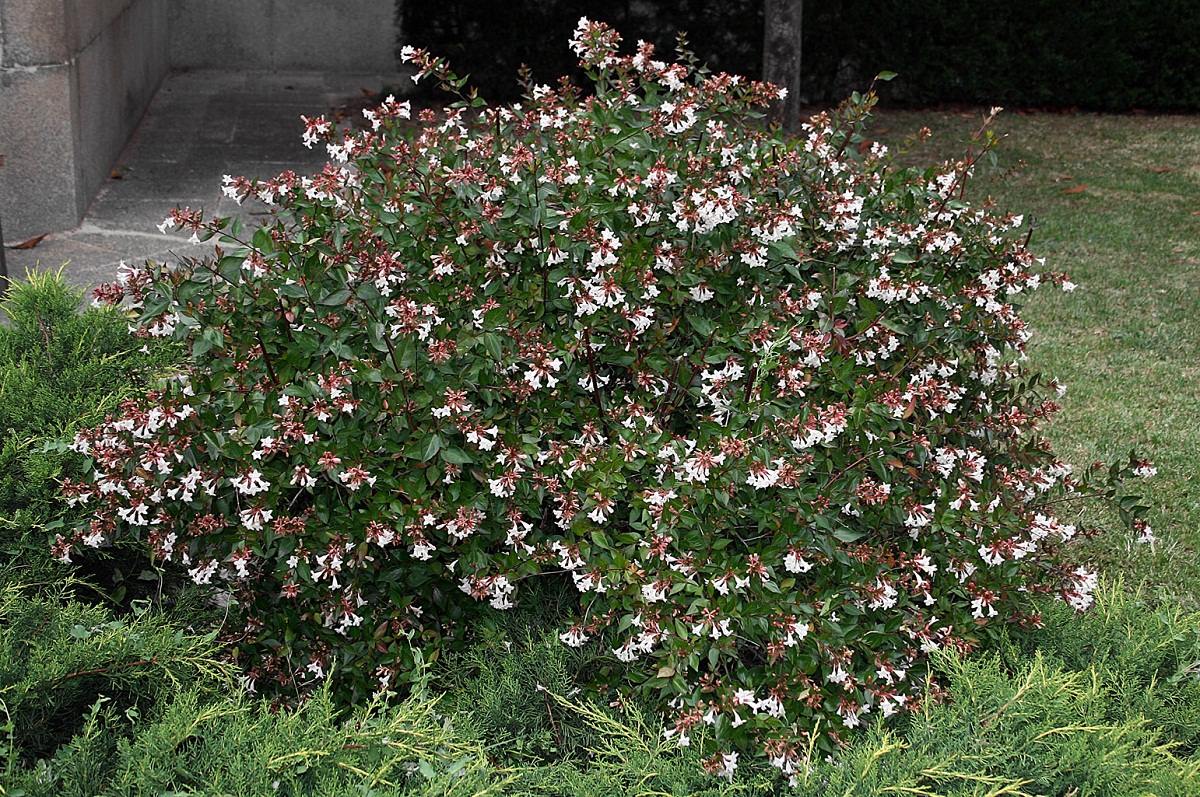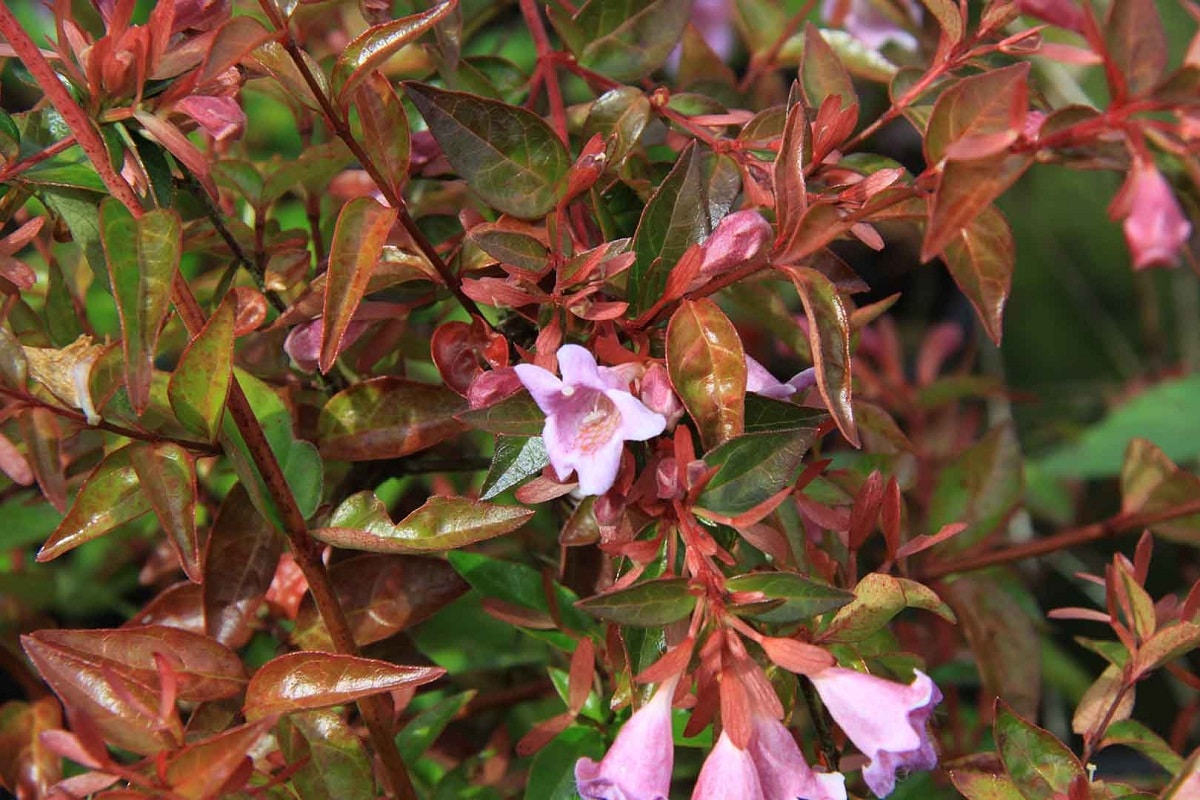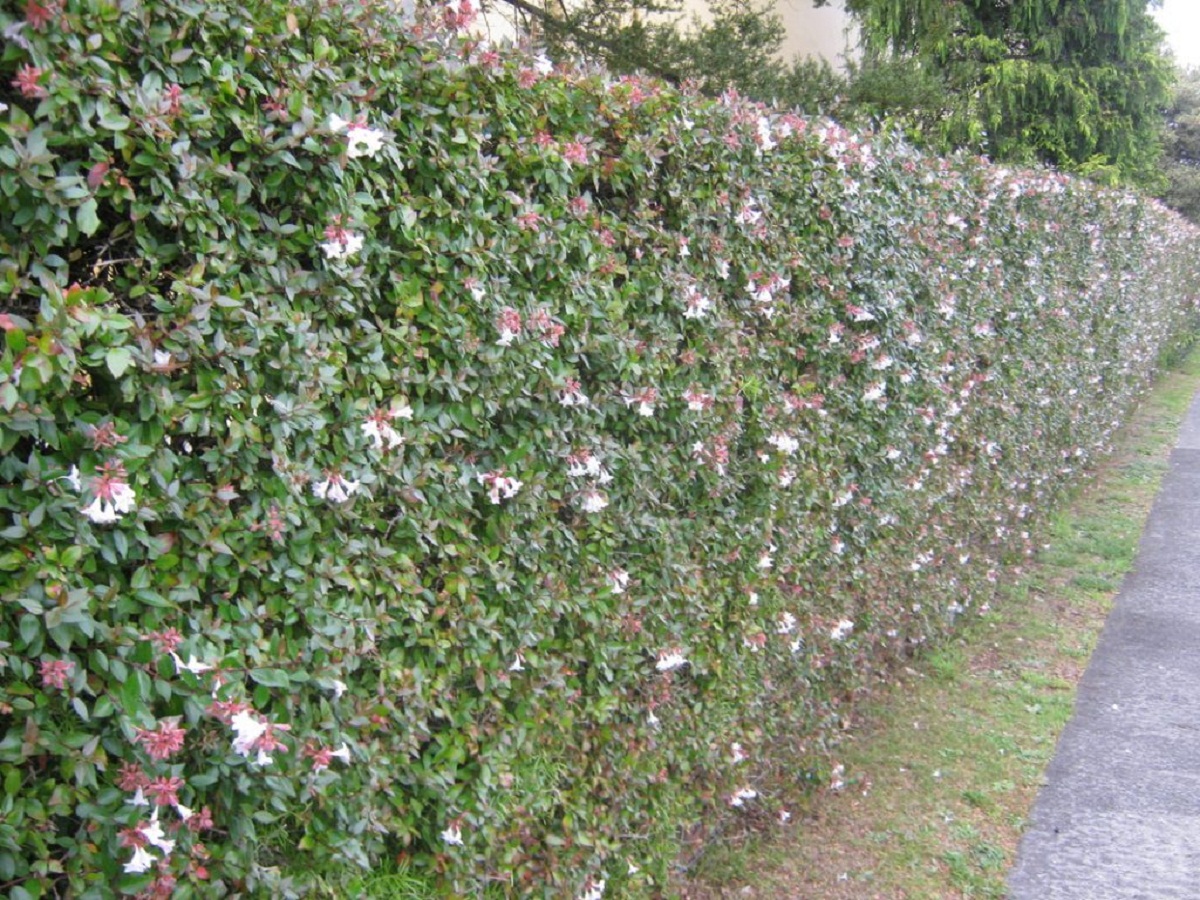
La Abelia grandiflora consists of a hybrid belonging to the genus Abelia, which is generally cultivated as an ornamental plant, both in pots and in gardens, due to its peculiar flowering, since it normally lasts approximately 6 months.
This plant is a hybrid obtained after crossing abellia uniflora y Abelia chinensis, which come from China; However, most of its commercial production as an ornamental plant takes place within regions with a temperate climate such as America, Europe and Africa.
Features

La Abelia grandiflora stands out for being a perennial shrub which develops under conditions of partially deciduous or evergreen leaf, according to the environmental conditions of its place of cultivation. It develops with total exposure to the sun, although it also tolerates spaces with partial shade, however, the density of its foliage is usually reduced due to both the shade and the low temperatures.
Is a highly branched shrub, which reaches an approximate height of 1-3mt; Its branches are usually reddish and slightly pubescent, the internal ones are firm and robust, while the external ones are differentiated by being pendular, curved and thin.
Its leaves are oval, petiolate and simple, with slightly serrated margins and a sharp apex, as well as a glossy dark green beam and a lighter colored underside. The same are arranged alternately around the ramifications, being organized within whorls that have between 3-5 leaflets whose length is around 2-6cm.
In low temperature conditions, its dark green foliage turns reddish and leathery in appearance; and according to the climatic conditions it could act as if it were a deciduous foliage shrub or a perennial one.
Their pinkish-white flowers have purplish spots and they tend to group within axillary and / or terminal inflorescences creating cymes composed of 1-3 units. Its calyx is made up of 2-5 sepals of various orange tones, which remain even when the flowering period ends.
Its pubescent corolla has a tubular shape and is approximately 1-2cm long, it is crowned with 4 stamens, 5 lobar petals and 1 inferior ovary. In addition, Abelia stands out for its long flowering time, which goes from the beginning of spring to autumn.
Its fruit consists of a achene with a length of 8-10mm, which can be conical, elongated or cylindrical, as well as glabrescent or slightly tomentose. Usually, the sepals of its calyx are persistent.
Growing and caring for the Abelia grandiflora
La Abelia grandiflora is able to adjust without problem to the crop, only requires a location within areas where it can be protected against cold winters, as well as a permeable, soft soil, adequately fertilized and which is not calcareous; it also requires organic compost in spring and fall.
Its cultivation has to be carried out in a place where it has full exposure to sunlight, so that it can have a continuous development and abundant flowering. As we have already pointed out, although it can grow well in places with partial shade, the truth is that in these cases, its flowering would have a lower yield. Some important aspects about its care and cultivation are also the following:
For its cultivation, although it is able to adapt to soils that have a coarse texture medium or medium, it needs a fertile and permeable soil, to which humus or organic compost is applied periodically throughout the spring and in the fall.
Irrigation it has to be done abundantly throughout the summer and rather reduced when spring arrives and also during autumn; and although it can withstand drought, during its flowering it must receive enough moisture. Likewise, during its youthful stage it requires constant watering.
Is a shrub quite susceptible to occasional frosts; so it is necessary to make sure to protect it in those times when the temperature is below 10 ° C.
This shrub is a plant that stands out for not requiring constant pruning, since in fact, the most used prunings in it consist of rejuvenation, carrying out them to eliminate their base, as well as each one of the branches that have enough time and those that have already fulfilled their function; I have to make sure not to touch the new ones.
The time of year where it is best to prune this plant is usually throughout the winter once it blooms. Is possible to place it in a shady area inside the garden, which is oriented to the northwest.
This shrub must be pruned, this being a care of great importance, so periodic pruning is recommended where the vigorous shoots from the base are cut, although there is a risk of losing flowering. And in case you want a more closed or compact appearance, it will be necessary to prune the main branches and leave them with half their length, doing it during winter or when spring begins.
Reproduction
In order to multiply the Abelia grandiflora, it is possible to reproduce it through cuttings, which will have to be planted during the period that elapses from late spring to early summer, making sure to do so in properly fertilized land. The way to do this, consists of cutting the cuttings just below the fifth node, making sure to remove each of the leaves that are in the middle of that and the 3rd node, without touching those that are higher.
The part that will have to go underground has to be anointed with special hormones in order for it to take root and then it will be necessary to bury it; in case you want to create some kind of robust wall using this bush, be sure to plant several cuttings.
Likewise, depending on the time of year, it is possible to bet by multiplying it by division of matasThis can be done in the spring, or through hardwood stakes in the fall.
Uses

La Abelia grandiflora can be used for barriers, foundations or masses; likewise, it serves to face erosion when being cultivated around a shore. Too can be used to obtain narrow, hard and uniform grain wood like the one used in the manufacture of walking sticks. In addition, it is a great ornamental plant for gardens and pots.
Plagues and diseases
Although this plant consists of a robust and rustic shrub which, being in appropriate edaphoclimatic conditions, is able to tolerate the attack of various diseases and pests; being in adverse conditions, its foliage could end up attacked by ants or infected with powdery mildew. They could also be affected by the mealybug, which should be treated as soon as possible using fungicides to prevent it from spreading.